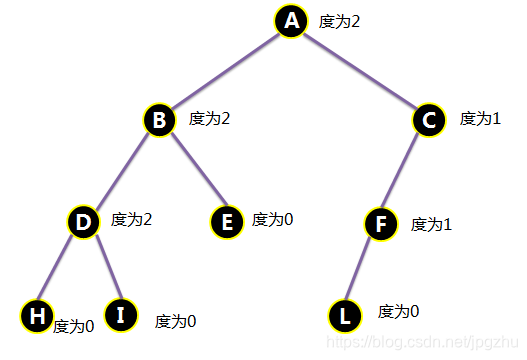自己動手作圖深入理解二叉樹、滿二叉樹及完全二叉樹
一、背景
二叉樹是數據結構中的重點,也是難點。二叉樹是一種非線性結構,比數組、棧、隊列等線性結構相比複雜度更高,想要做到心中有「樹」,需要自己動手畫圖、觀察、思考,才能領會其真諦。該文將會結合圖形,深入理解二叉樹、滿二叉樹及完全二叉樹的概念。
二、基本概念
2.1 結點
- 結點是組成二叉樹的最小單元。
— 用圖形表示

— 用代碼表示
// 結點
class Node<E> {
E e;
Node left, right;
Node(E e) {
this.e= e;
this.left = null;
this.right = null;
}
}
2.2 二叉樹
- 每個結點的度(結點擁有的子樹數目)不超過2的樹叫做二叉樹

2.2.1 二叉樹的深度
- 結點的最大層次數稱為樹的深度或高度

2.3 滿二叉樹
- 指深度為k且有2k-1個結點的二叉樹,即所有分支結點都存在左子樹和右子樹,並且所有葉子都在同一層上。
- 下圖中深度為4,24-1=15個結點,且所有葉子都在第四層上。

2.4 完全二叉樹
- 一顆深度為k的二叉樹,k層的結點都是連續靠左並不可隔開的,並且1~k-1層的結點也組成了一棵滿二叉樹,這樣的二叉樹,我們稱為完全二叉樹。

2.4.1 完全二叉樹的線性存儲
- 出於簡便起見,完全二叉樹通常採用數組進行線性存儲

/**
* 完全二叉樹的線性存儲
*
* @author zhuhuix
* @date 2020-06-24
*/
public class FullBinaryTree {
private Object[] arr;
private int size;
FullBinaryTree(int capacity) {
this.arr = new Object[capacity + 1];
this.size = 0;
}
public int getSize() {
return this.size;
}
public boolean isEmpty() {
return this.size == 0;
}
public void add(Object e, int index) {
assert index <= this.arr.length;
this.arr[index] = e;
this.size++;
}
@Override
public String toString() {
return "FullBinaryTree{" +
"arr=" + Arrays.toString(arr) +
", size=" + size +
'}';
}
public static void main(String[] args) {
FullBinaryTree fullBinaryTree = new FullBinaryTree(26);
// 從下標1開始存入26個字母
for (Character c = 'A'; c <= 'Z'; c++) {
fullBinaryTree.add(c, c - 'A' + 1);
}
System.out.println( fullBinaryTree.toString());
}
}

2.4.2 完全二叉樹的創建與遍歷
/**
* 完全二叉樹的創建與遍歷
*
* @author zhuhuix
* @date 2020-06-24
*/
public class BinaryTree {
// 結點
private Node root;
// 結點數
private int size;
// 存放結點
private ArrayList<Node> list;
public BinaryTree() {
this.root = null;
this.size = 0;
this.list = new ArrayList<>();
}
public void createTree(Object[] array){
for(int i=0;i<array.length;i++){
Node node =new Node(array[i]);
list.add(node);
if (this.root==null){
this.root = node;
}
}
if(list.size()>0){
for(int i=0;i<array.length/2;i++){
if(2*i+1<list.size()) {
list.get(i).left=list.get(2 * i + 1);
}
if(2*i+2<list.size()) {
list.get(i).right=list.get(2 * i + 2);
}
}
}
}
// 前序遍歷
public void preOrder(Node root){
if(root == null){
return ;
}
else{
System.out.println(root.getData());
}
preOrder(root.left);
preOrder(root.right);
}
public Node getRoot() {
return root;
}
// 私有內部類-樹結點
private class Node {
Object data;
Node left, right;
Node(Object data) {
this.data = data;
this.left = null;
this.right = null;
}
Object getData() {
return data;
}
}
public static void main(String[] args) {
BinaryTree binaryTree = new BinaryTree();
Character[] array ={'A','B','C','D','E','F','G','H','I','J','K','L',
'M','N','O','P','Q','R','S','T','U','V','W','X','Y','Z'};
binaryTree.createTree(array);
binaryTree.preOrder(binaryTree.getRoot());
}
}










